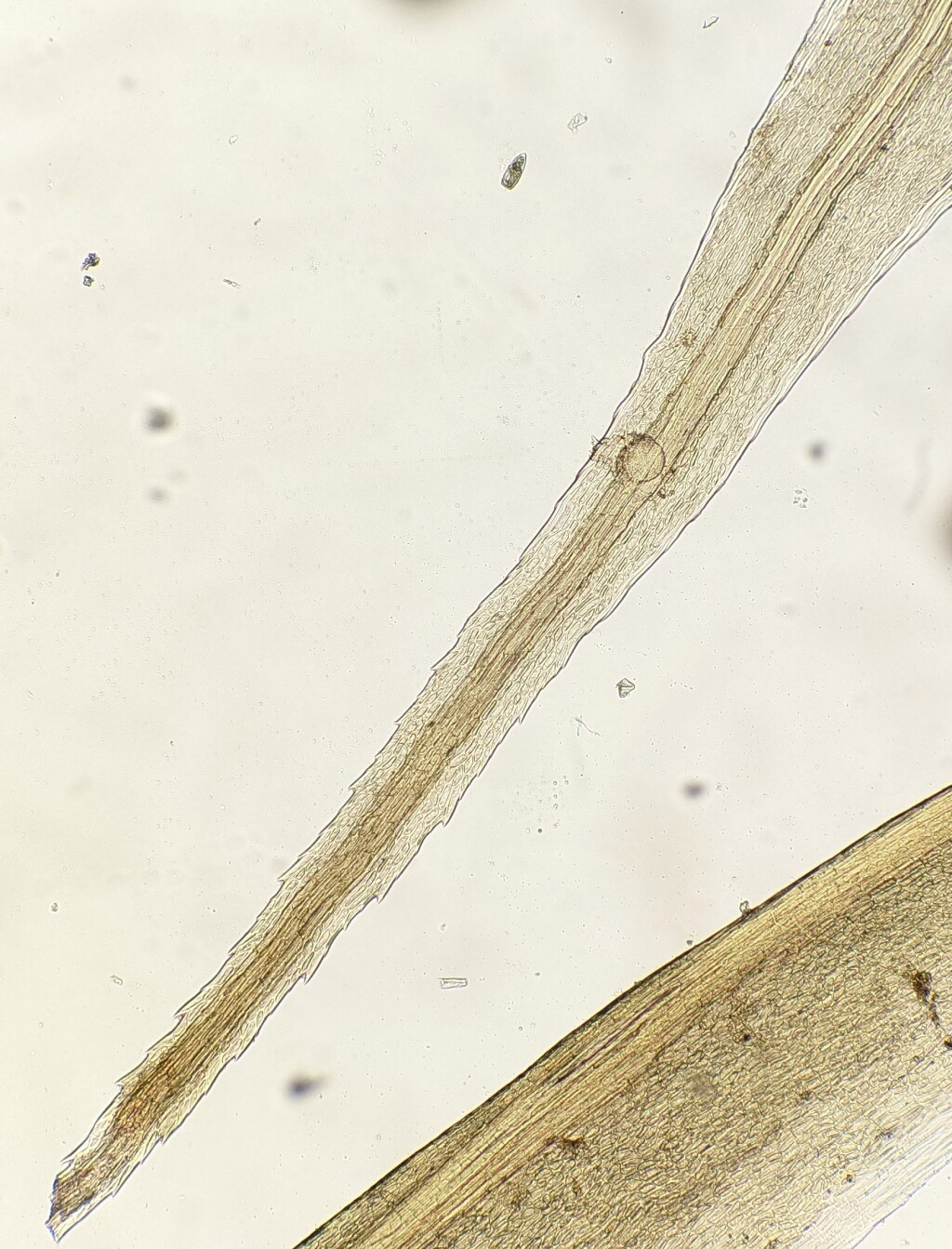Dicranoloma platycaulon
DixonAsexual reproduction sometimes by breaking of fragile leaf tips. Turves 3–12 cm tall on Nothofagus cunninghamii trunks and limbs. Stems branched, reddish brown, densely tomentose with pale brown rhizoids; central strand present. Leaves falcate-secund, becoming more undulate when dry, lanceolate, 7–14 (–15.7) mm long, 1.3–2 (–2.3) mm wide, undulate along costa particularly when dry, canaliculate; apex long acuminate, fragile and detaching; costa distinct, subpercurrent or percurrent, abaxially with two rows of teeth (not in Victoria) or scattered teeth in apical 2/5–3/5; margin serrate in apical 1/2–3/5, entire below, usually plane, occasionally slightly undulate, with a border of 6–16 rows of cells extending to serrate part of margin; lamina cells in apical half oblate to elongate, 10–65 μm long, 6–15 μm wide, typically in an irregular pattern, but often almost regularly in longitudinal rows in parts of the leaf, especially the apical, non-undulate part; lamina cells in basal half elongate to linear, (35–) 50–157 μm long, 8–13 μm wide; alar cells quadrate to rectangular, 13–103 (–114) μm long, (14–) 20–46 μm wide, inflated, with brown walls, colourless in young leaves. Seta solitary or up to 3 clustered together, 11–14 mm long, yellowish or red-brown, smooth. Capsule inclined to vertical, cylindric, curved, 3–4 mm long. Operculum obliquely rostrate from conical base, 2.8–3.2 mm long.
OtP, WPro, HSF, HNF, OtR, Strz, VAlp. Recorded from the Yarra and Strzelecki Ranges in Nothofagus cunninghamii dominated cool-temperate rainforest. Also Tas. New Zealand.
 Spinning
SpinningKlazenga, N. (2003). A revision of the Australasian species of Dicranoloma (Bryophyta, Dicranaceae). Australalian Systematic Botany 16: 427–471.


